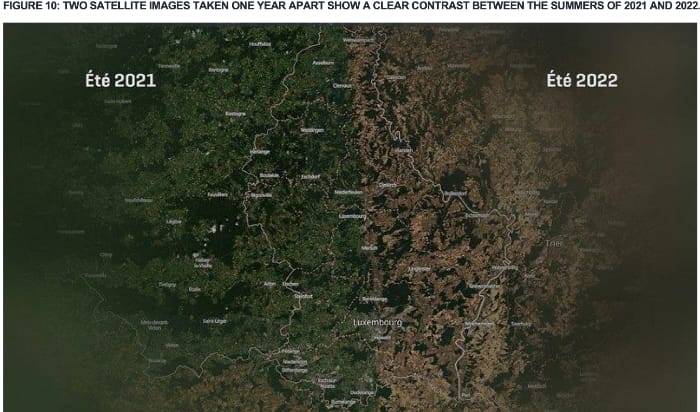A Millman report on Extreme Weather Conditions in Europe showcases the link between climate change and economic losses which have led to major losses for insurers and reinsurers in Europe. Temperatures in Europe have increased by twice the global average which is the highest in any continent causing severe wildfires, droughts and heatwaves.
Europe in 2022 was impacted by record-breaking extreme weather that brought above-average claims to European re/insurers. February of 2022 brought hurricane-force winds, heavy rains and local flooding which have been estimated to have brought EUR 3.3 billion in re/insured losses.
According to the report, the costliest peril of 2022 has been drought, which is statistically the worst drought the continent has seen in 500 years. This disaster alone has been estimated to cause EUR 19 billion in re/insured losses to European agriculture, livestock and energy sectors. The drought was ranked second on Christian Aid’s 2022 list of costliest multibillion-dollar weather disasters with Hurricane Ian being the first that caused an estimated re/insured loss of EUR 93 billion.
In addition to droughts, heat waves and high temperatures across the 27-nation European Union have caused wildfires that burned a total cumulative area exceeding 1.9 million acres which is twice the average between 2006 and 2021. Wildfire risk is a growing concern for insurance and reinsurance markets and has caused some reinsurers to limit their exposure as a result.
The image below, included in the report and sourced from RTL Today, shows the extreme drought conditions in Luxembourg in 2022 compared with the prior year.

The report also mentions Munich Re making an observation that the impact of climate change is becoming more pronounced and re/insurers need to adapt their loss models accordingly.
According to the reinsurer, this is because, “Loss prevention is a fundamental component in mitigating the economic effects of climate change.” It goes on to mention how European insurers and reinsurers are in a unique position to leverage their expertise and data analytics capabilities to manage the financial risks associated with extreme weather events and climate change and help mitigate the impacts. Ultimately to take a leading role in not only managing risks but supporting adaptation and prevention.
The report also summarises the weather losses incurred in 2021 into four major natural perils: storms across Western Europe, the hottest summer on record, the worst drought seen in centuries, and wildfires.
Comparatively, taking a look at the impact on re/insurers due to the natural perils of 2021, the losses incurred have been significantly higher than any calamities in the last decade.
The costliest event was the July 2021 flooding in Germany, Belgium and neighbouring countries. This catastrophe has caused re/insured losses of up to EUR 12 billion, compared to more than EUR 37 billion in economic loss which indicates a high protection gap.
Furthermore, thunderstorms, hail and tornadoes that have caused property damage throughout Europe have been estimated to be a factor in the EUR 4.1 billion insured losses.
Milliman’s report tries to put forth some steps that insurers can take in the face of the rising risks. The report suggests that re/insurers should be able to access data to be able to better understand climate risk. For example, while underwriting open data would enable the insurers to adjust offers based on the different risks posed on a fine geographical scale.
Climate change scenario analysis is another way in which insurers would be able to understand the impact of climate change on their business and invest accordingly.
The report finds that casual modelling can be used to consider climate risk and asset returns. Casual modelling makes use of expert judgement about the composition of a problem to develop a potential picture of the risk posed using structured and unstructured data, the report suggests. This will allow the insures to capture the causal link between the elements of cause and the effect they create on a nonlinear model of the problem.
Eurostat accounts for climate change as the cause of losses for the European Union of about EUR 145 billion from 2010 to 2020, and with heatwaves, droughts, floods, and wildfires poised to intensify as a result of the changing climate, coupled with the effects of urbanisation and growing populations, insured losses could be on the rise.


